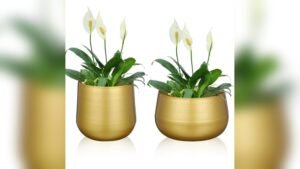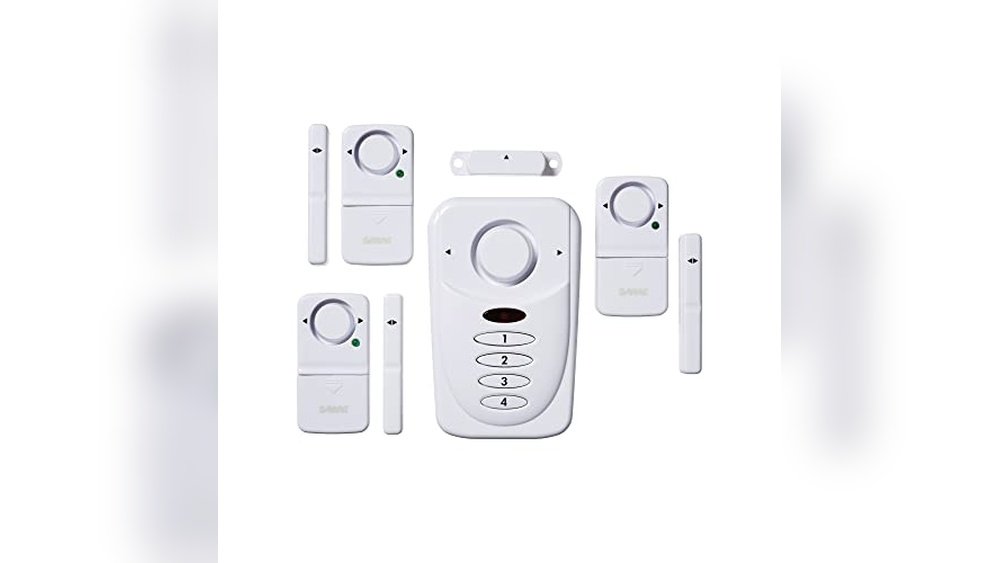Are you looking to make a positive impact on the planet without compromising on quality or convenience? You’re not alone.
As global awareness of environmental issues grows, more people like you are turning to eco-friendly products. These products promise a greener future while fitting seamlessly into your daily life. But what exactly are eco-friendly products, and how can they benefit you and the planet?
We’ll unravel the mystery behind these sustainable choices and show you how simple changes in your shopping habits can make a big difference. Get ready to discover a world where your everyday purchases can help preserve the Earth for future generations. Stay with us, and you’ll learn how to make informed decisions that align with your values and lifestyle.

Credit: www.niir.org
Eco-friendly Products Defined
Eco-friendly products are items that have minimal impact on the earth. They are designed to protect the environment. These products use sustainable materials. They help reduce pollution and waste. Their production methods are green and safe.
Understanding eco-friendly products can guide better choices. These products support a healthier planet. They are vital for a sustainable future.
What Makes A Product Eco-friendly?
Eco-friendly products use renewable resources. They avoid harmful chemicals. Their production is energy-efficient. They minimize carbon footprint. These products often have certifications. Labels like “organic” or “biodegradable” indicate eco-friendliness.
Benefits Of Eco-friendly Products
These products help reduce pollution. They conserve natural resources. They promote a healthier lifestyle. Eco-friendly items often last longer. They can save money over time. Supporting these products encourages sustainable practices.
Examples Of Eco-friendly Products
Reusable bags and water bottles are eco-friendly. Solar panels and LED bulbs save energy. Organic foods and natural soaps reduce chemical use. Bamboo toothbrushes and recycled paper reduce waste.
How To Identify Eco-friendly Products
Read product labels for eco-friendly claims. Look for certifications from trusted organizations. Check for sustainable materials. Research brands committed to green practices.
Challenges In Choosing Eco-friendly Products
Eco-friendly products can be more expensive. Availability might be limited. Misleading claims can confuse consumers. Awareness and research are necessary.
Benefits Of Sustainable Living
Eco-friendly products offer significant benefits for sustainable living. They minimize waste and reduce environmental harm. Choosing these products supports healthier ecosystems. They often use natural materials, which are safer for humans and wildlife. By integrating them into daily life, individuals contribute to a cleaner planet.
Sustainable living is more than just a trend; it’s a lifestyle choice that can greatly benefit you and the planet. By opting for eco-friendly products, you contribute to a cleaner environment and promote a healthier life. But what exactly makes sustainable living so beneficial, and how can you make it a part of your everyday life?Environmental Impact
Choosing eco-friendly products helps reduce pollution and conserve natural resources. Imagine waking up to a world where the air is fresher and the water is cleaner. By using biodegradable materials and supporting renewable energy, you play a part in creating that world. Are you ready to make a difference with your daily choices?Healthier Lifestyle
Sustainable living often means choosing products that are free from harmful chemicals. These products are safer for your family and pets. Picture your home filled with natural scents from organic cleaning products rather than the harsh smell of chemicals. How would that change the way you feel in your own space?Cost Savings
Eco-friendly products can lead to significant savings in the long run. Consider energy-efficient appliances that lower your electricity bills. Or reusable items that reduce the need for constant replacements. Have you ever thought about how much money you could save by investing in quality items that last longer?Supporting Local Economies
Many sustainable products are made by small businesses and local artisans. By purchasing these items, you support your local economy and foster community growth. Think about the impact of choosing a handmade soap from a local vendor instead of a mass-produced one. Isn’t it rewarding to know you’re helping someone in your community thrive?Encouraging Innovation
The demand for eco-friendly products encourages companies to innovate and develop better solutions. This competition drives progress in sustainable technology and practices. Have you noticed how rapidly the options for green technology have expanded? Your choices can inspire further advancements. Sustainable living is about making conscious decisions that benefit you and the world. It’s about choosing quality over quantity and prioritizing health and well-being. Are you ready to embrace the benefits of sustainable living?Types Of Eco-friendly Products
Eco-friendly products help the planet by using sustainable materials. They include items like reusable bags, solar-powered gadgets, and biodegradable utensils. These products reduce waste and conserve resources, supporting a healthier environment.
In today’s world, choosing eco-friendly products is more than just a trend—it’s a responsible lifestyle choice. By embracing products that minimize harm to our planet, you can contribute positively to environmental conservation. But what types of eco-friendly products are available, and how can they fit into your daily routine? Let’s dive into various categories of these sustainable options and see how they can make a difference.Reusable Items
Reusable items are a fantastic way to reduce waste. Imagine your morning coffee in a stylish reusable cup instead of a disposable one that ends up in a landfill. These items range from shopping bags and water bottles to straws and food containers. Switching to reusable products can save you money in the long run. They’re durable and often more cost-effective over time. Plus, they offer the satisfaction of knowing you’re not contributing to the growing pile of single-use plastics.Biodegradable Products
Biodegradable products break down naturally, reducing their impact on the environment. Everyday items like cleaning supplies, packaging, and utensils can be found in biodegradable forms. These products decompose faster than their traditional counterparts, returning to the earth without leaving harmful residues. Imagine the impact on landfills if everyone switched to biodegradable trash bags. Look around your home. Could any of your household items be swapped for biodegradable versions? It’s a small change with a big impact.Energy-efficient Devices
Energy-efficient devices are designed to use less electricity while providing the same level of performance. Think of LED light bulbs, which last longer and use less power than traditional bulbs. By choosing energy-efficient appliances, you can reduce your carbon footprint and save on utility bills. Consider devices like smart thermostats and energy-efficient refrigerators. They not only help the environment but also lead to significant savings over time. Have you checked the energy ratings of your home appliances lately? It might be time for an upgrade to something more sustainable. Incorporating eco-friendly products into your life doesn’t have to be overwhelming. Start with one category, like reusable items, and gradually explore others. Each choice you make contributes to a healthier planet and a more sustainable future. How will you start making changes today?
Credit: www.marinebiodiversity.ca
Materials Used In Eco-friendly Products
Eco-friendly products are gaining popularity. They aim to reduce environmental harm. Materials used in these products play a vital role. Choosing sustainable materials helps preserve nature. It reduces pollution and waste. Let’s explore the materials commonly used in eco-friendly products.
Natural Fibers
Natural fibers are biodegradable. They come from plants and animals. Cotton, wool, and hemp are popular choices. These materials are renewable and sustainable. Cotton is soft and breathable. Wool offers warmth and durability. Hemp is strong and grows quickly. Using natural fibers reduces reliance on synthetic materials.
Recycled Materials
Recycled materials minimize waste. They give old products a new life. Plastic, glass, and metal can be recycled. Recycled plastics reduce landfill overflow. Glass can be reused multiple times. Recycled metal saves energy and resources. Products using recycled materials are eco-friendly. They help conserve natural resources.
Organic Components
Organic components are free from harmful chemicals. They are grown without pesticides or fertilizers. Organic cotton is a popular choice. It is gentle on the skin and planet. Organic bamboo is another option. It is fast-growing and renewable. These materials ensure safety for consumers and the environment. Choosing organic components supports sustainable agriculture.
Choosing Eco-friendly Products
Choosing eco-friendly products can feel overwhelming. With many options available, it’s crucial to make informed choices. These choices can have a positive impact on the environment. Understanding what to look for can help you select products that truly benefit the planet.
Certifications To Look For
Certifications provide assurance of a product’s eco-friendliness. Look for labels like “Energy Star” for electronics. The “Fair Trade” label ensures ethical practices. “USDA Organic” signifies organic farming methods. “Forest Stewardship Council” ensures sustainable wood sourcing. These certifications confirm the product meets environmental standards.
Assessing Product Lifespan
Consider how long a product will last. Durable items reduce waste. Check product reviews for quality insights. Longer-lasting products often offer better value. They also lessen the need for frequent replacements. Choose items designed for longevity.
Avoiding Greenwashing
Greenwashing misleads consumers about environmental benefits. Be cautious of vague claims like “all-natural.” Verify claims with research. Authentic eco-friendly products provide clear benefits. Check for transparency in company practices. Real eco-friendly brands offer detailed information.
Impact Of Eco-friendly Products
Eco-friendly products are designed to minimize harm to the environment. They often use sustainable materials and reduce pollution. Choosing these products supports healthier ecosystems and promotes a greener lifestyle.
The impact of eco-friendly products extends beyond just their immediate use. These products influence various aspects of our lives and the planet. By choosing items that are environmentally responsible, you contribute to a ripple effect of positive change. But how exactly do eco-friendly products make a difference? Let’s delve into their environmental, economic, and social impacts.Environmental Benefits
Eco-friendly products help in reducing pollution. They are often made from natural or recycled materials that minimize waste. This means less trash in landfills and oceans. They also conserve resources. For example, products that use renewable energy or biodegradable materials require fewer resources to produce and dispose of. By using them, you’re supporting a sustainable future. Imagine the air you breathe being cleaner because fewer chemicals are released into the atmosphere. That’s one of the perks of using eco-friendly products.Economic Advantages
Eco-friendly products can save you money. Many are designed to be durable and efficient, reducing the need for frequent replacements. This means more savings in your pocket over time. Businesses that offer eco-friendly products often see increased customer loyalty. People are more likely to support companies that care about the planet. This can lead to higher profits for those businesses. Jobs are created in the green sector. As demand for sustainable products rises, new opportunities emerge, boosting the economy.Social Impact
Choosing eco-friendly products can inspire others. When you make sustainable choices, you set an example for friends and family. It’s about creating a culture of responsibility. Communities benefit from reduced pollution and healthier environments. This leads to improved public health and overall well-being. Education and awareness grow. People learn more about the importance of sustainability, fostering a sense of global responsibility. Could your next purchase change the world? Eco-friendly products aren’t just items; they’re catalysts for change. Each choice you make has the power to impact the world positively. How will you make a difference today?Incorporating Eco-friendly Products In Daily Life
Switching to eco-friendly products helps protect our planet. It reduces waste and pollution. It also promotes a healthier lifestyle. Making these choices might seem challenging. But it’s simple with small changes. Start with basic items in your home and routines. You’ll notice the difference over time. Let’s explore easy ways to go green.
Sustainable Household Items
Many household items have eco-friendly versions. Replace plastic bags with reusable ones. Use cloth towels instead of paper. Choose energy-efficient appliances. They save electricity and lower bills. Opt for natural cleaning products. They’re less harmful to the environment. Every swap counts.
Eco-friendly Personal Care
Personal care products can be eco-friendly too. Select shampoos in refillable bottles. Try bamboo toothbrushes instead of plastic. Use organic soaps and lotions. They’re gentle on your skin and the earth. Look for items with minimal packaging. Less waste means a cleaner planet.
Green Transportation Options
Transportation choices impact the environment. Consider walking or biking for short trips. It’s healthy and eco-friendly. Use public transport to reduce your carbon footprint. Carpool with friends or colleagues. Electric vehicles are also a great choice. They produce fewer emissions. Every effort makes a difference.
Challenges In Adopting Sustainable Products
Adopting sustainable products can be a significant challenge. Despite growing awareness of eco-friendly choices, barriers remain. These challenges include cost, accessibility, and consumer awareness. Let’s explore these hurdles to understand them better.
Cost Considerations
Sustainable products often come with a higher price tag. This can deter many consumers. The production of eco-friendly goods may cost more. Often, sustainable materials are more expensive. This results in higher prices for the end product. Many consumers find it hard to justify these expenses. Especially when cheaper alternatives are available.
Accessibility Issues
Eco-friendly products are not always easy to find. In many regions, they are scarce. This is especially true in rural areas. Consumers may need to travel far to access them. Online options exist, but not everyone shops online. Shipping costs can add another barrier. These factors make it hard for many to switch to sustainable options.
Consumer Awareness
Many people lack knowledge about sustainable products. They might not know why these are better choices. Some consumers are unaware of environmental impacts. This lack of awareness can prevent change. Education and marketing play crucial roles here. They can help in spreading information about eco-friendly options.
Future Of Eco-friendly Products
The future of eco-friendly products promises a greener tomorrow. As awareness grows, demand for sustainable options increases. These products help reduce waste and conserve resources. They also appeal to conscious consumers. Businesses see the potential and are innovating. Governments support these initiatives. Global adoption is on the rise. The future looks bright for eco-friendly products.
Innovative Trends
Innovation drives the evolution of eco-friendly products. Companies use recycled materials in new ways. Biodegradable packaging is gaining popularity. Clean energy solutions are more accessible. Eco-friendly technologies are developing rapidly. Smart homes incorporate energy-saving systems. Sustainable fashion is trending. New designs prioritize ecological impact. Consumers want sustainable options.
Policy Support
Governments are backing eco-friendly initiatives. Policies promote sustainable practices. Tax incentives encourage green businesses. Regulations enforce environmental standards. Education programs raise awareness. Support for research is growing. Grants fund eco-friendly projects. Policy changes push industries to adapt. Public interest shapes policy direction.
Global Adoption
Eco-friendly products are globally embraced. International markets seek sustainable goods. Cross-border collaboration increases. Countries share green technologies. Awareness campaigns reach diverse audiences. Global events promote eco-friendly practices. Trade agreements include environmental clauses. Eco-friendly products find a place worldwide. Cultural shifts encourage adoption.

Credit: www.wood-blocks.com
Frequently Asked Questions
What Is An Example Of An Eco-friendly Product?
A reusable stainless steel water bottle is an eco-friendly product. It reduces plastic waste and promotes sustainability by minimizing single-use plastic consumption. This helps in conserving natural resources and lowering environmental impact. Opt for durable and recyclable materials to support a greener planet.
What Qualifies A Product As Eco-friendly?
A product is eco-friendly if it’s made from sustainable materials, reduces waste, and minimizes environmental impact. It should be recyclable, biodegradable, or reusable. Manufacturing processes should conserve energy and resources. Packaging must be minimal and eco-conscious. Being certified by environmental organizations also qualifies it as eco-friendly.
What Are Eco-friendly Food Products?
Eco-friendly food products are sustainably sourced, organic, and locally grown. They minimize environmental impact and reduce carbon footprint. These products often use biodegradable packaging and support biodiversity. Choosing eco-friendly options promotes healthier ecosystems and ethical farming practices.
What Are The Best Eco-friendly Items?
Reusable water bottles, bamboo toothbrushes, and cloth shopping bags are top eco-friendly items. Solar-powered chargers and biodegradable cleaning products also reduce environmental impact. Choose products with minimal packaging to further support sustainability efforts.
Conclusion
Eco-friendly products protect our planet. They reduce waste and save resources. Choosing these products supports a healthier environment. Simple swaps make a big difference. Reusable bags, bamboo toothbrushes, and natural cleaners are easy changes. Each choice matters. Small actions lead to big impacts.
Start today and make a positive change. It benefits everyone, now and in the future. Encourage others to join this sustainable journey. Together, we can create a greener world. Remember, every purchase counts towards a healthier planet. Embrace eco-friendly living for a better tomorrow.







